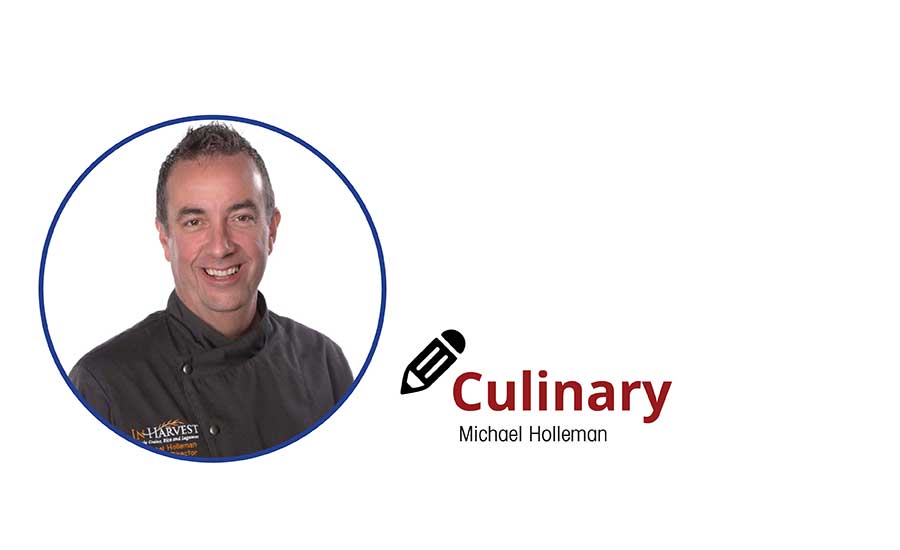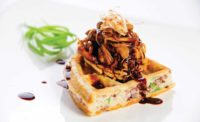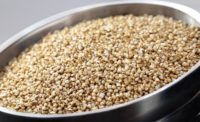Walking through the bread or baked-goods aisle at a supermarket or visiting a local retail bakery is quite different than 10 years ago. The myriad choices are daunting, to say the least. But that loaf of 12-grain bread doesn’t necessarily mean you will see or taste 12 different grains. More likely, those grains will be in the form of flour. While whole oats have long graced the tops of bread loaves as the token “intact” grain, consumers are now demanding more intact grains as the surge in whole-grain awareness and consumption continues.
Intact grains are the next evolution in the whole-grains movement. Grains are considered whole as long as all three edible parts—the bran, germ and endosperm—are still present in their original proportions. It’s okay if the grain has been ground, cracked, flaked or otherwise processed. But as more consumers and diners seek food options that are rich in whole-grain goodness, they’re now looking for characteristics that better distinguish, say, a slice of soft, light-brown, whole-wheat bread from their favorite enriched white-flour breads of yesteryear. They want those textural and color contrasts that characterize the incorporation of intact grains.
The foodservice industry is responding to meet demand. Panera Bread uses a propriety grain blend in its Whole Grain Bread, which is a pan loaf sweetened with honey and featuring intact whole grains. The blend consists of cracked wheat, rye meal, whole spelt flour, whole amaranth, oats, ground flax seed and citrus fiber.
Beyond the bakeries and bread aisles, the greatest opportunity in 2017 for intact whole grains will likely be the breakfast daypart. It’s been a bright spot in foodservice in recent years. Consumers’ increasingly fast-paced lifestyles; heightened interest in, and demand for, healthier foods to start their days; growing interest in morning fare at nontraditional times; and extended all-day breakfast programs are fueling the trend.
The growing snacking trend is also a boon for increased sales of breakfast items sporting intact whole grains, particularly among Millennials and younger consumers who are especially likely to order breakfast for between-meal occasions.
Historically, protein at breakfast has been associated almost exclusively with meat, but as special diets proliferate, more attention is being paid to readily abundant sources of protein in meatless forms. Technomic research even shows that about half of breakfast consumers want to see more chain restaurants offer non-meat proteins on the menu.
As demand for alternative sources of breakfast proteins grows, many vegetarian ingredients—including lentils, seeds, cereal grains, whole grains and ancient grains—will all grow on breakfast menus, particularly at limited-service restaurants (LSRs) in convenient formats. Look for the growth of housemade breakfast bars.
One of the main challenges in working with intact grains and wanting to market the finished product as “whole grain” is the cook time. Beyond quinoa and bulgur, most whole, intact grains will run the 35- to 45-minute gamut, and some will take 50 or more minutes to cook.
Solution: Start with the quicker cooking (12- to 20-minute) whole grains. Here are a few to get you started: amaranth, bulgur, freekeh and quinoa. There are three colors of quinoa (white, red and black), each of which is a complete protein, but many chefs, bakers and R&D professionals prefer the red for its nuttiness and appealing color.
Unless your kitchen or R&D center has blast chillers or large walk-in coolers, it’s likely you will need to resort to a cold rinse and drain to stay within food-safety temperatures. This is not ideal, especially when doing large-batch cooking in industrial steam kettles.
Solution: Consider puffed/toasted grains. This is an intact grain that has been puffed using high heat.
The advantage with puffed and toasted grains is that in some cases they can be mixed into dough as is, and the moisture/liquid in the recipe will completely hydrate the intact grain during the cooking process.




